A software development company has 764 employees who work from home. The company also has small offices located in different cities throughout the world. During working hours, they use RAPs to connect to a datacenter to upload software code as well as interact with databases.
In the past two month, cabling issues have occurred connection to the 7240XM Mobility Controller (MC) that runs ArubaOS 8 and terminates the RAPs. These RAPs disconnect, affecting the users connected to the RAPs. This also causes problems with code uploads and database synchronizations. Therefore, the company decides to add a second 7240XM controller for redundancy.
How should the network administrator deploy both controllers in order to provide the redundancy while preventing failover events from disconnecting users?
Refer to the exhibits.
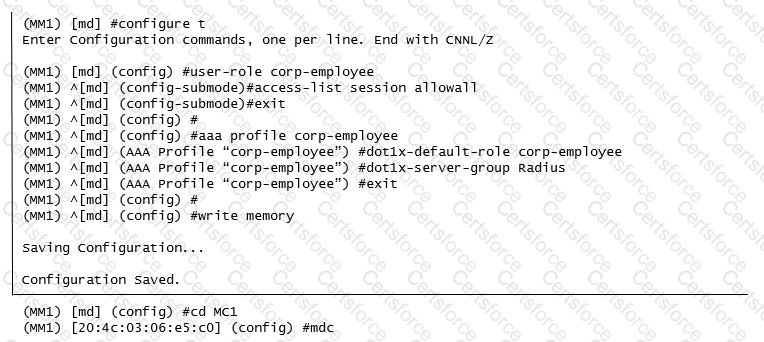
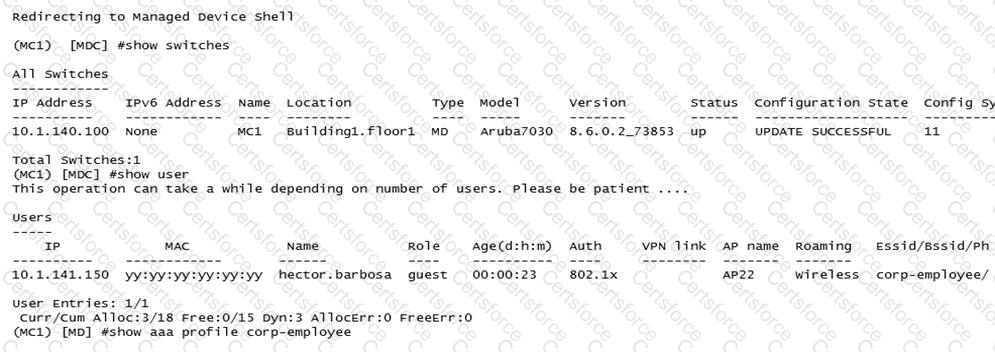
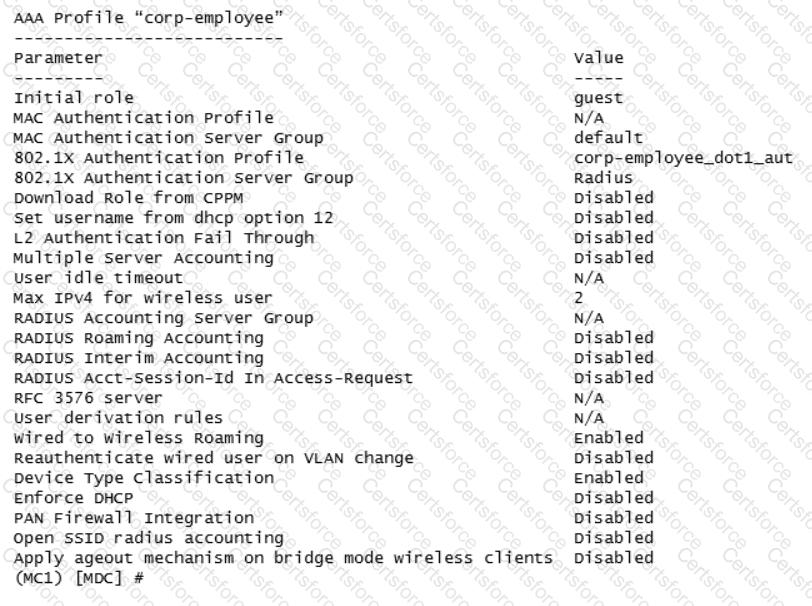
A network administrator has fully deployed a WPA3 based WLAN with 802.1X authentication. Later he defined corp-employee as the default user-role for the 802.1X authentication method in the aaa profile. When testing the setup he realizes the client gets the “guest” role.
What is the reason “corp-employee” user role was not assigned?
A joint venture between two companies results in a fully functional WLAN Aruba solution. The network administrator uses the following script to integrate the WLAN solution with two radius servers, radius1 and radius2.
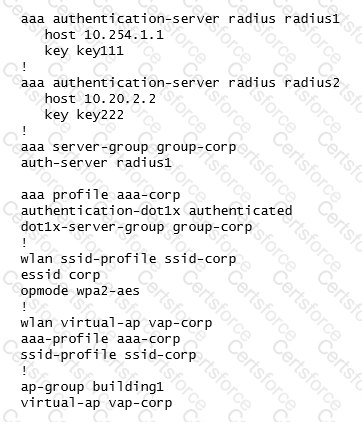
While all users authenticate with username@domainname.com type of credentials, radius1 has user accounts with the domain name portion.
Which additional configuration is required to authenticate corp1.com users with radius1 and corp2 users with radius2?
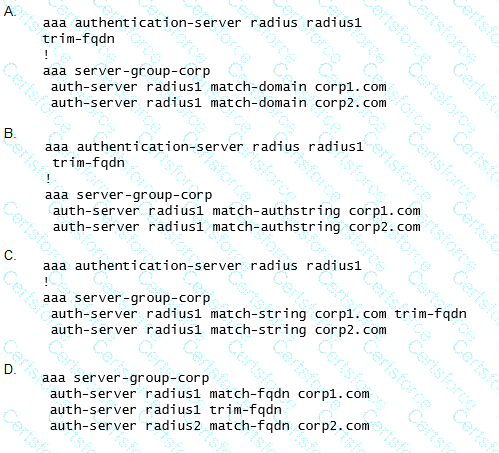
Refer to the exhibit.
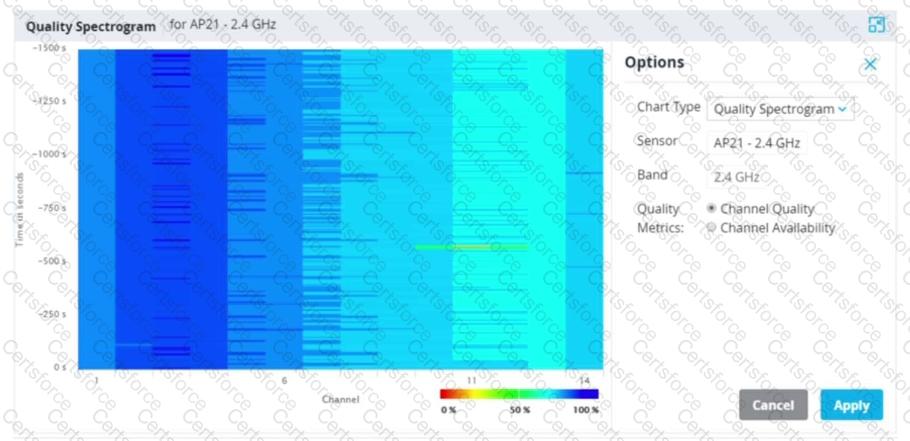
Based on the output shown in the exhibit, which channel offers the highest quality?
Refer to the exhibit.
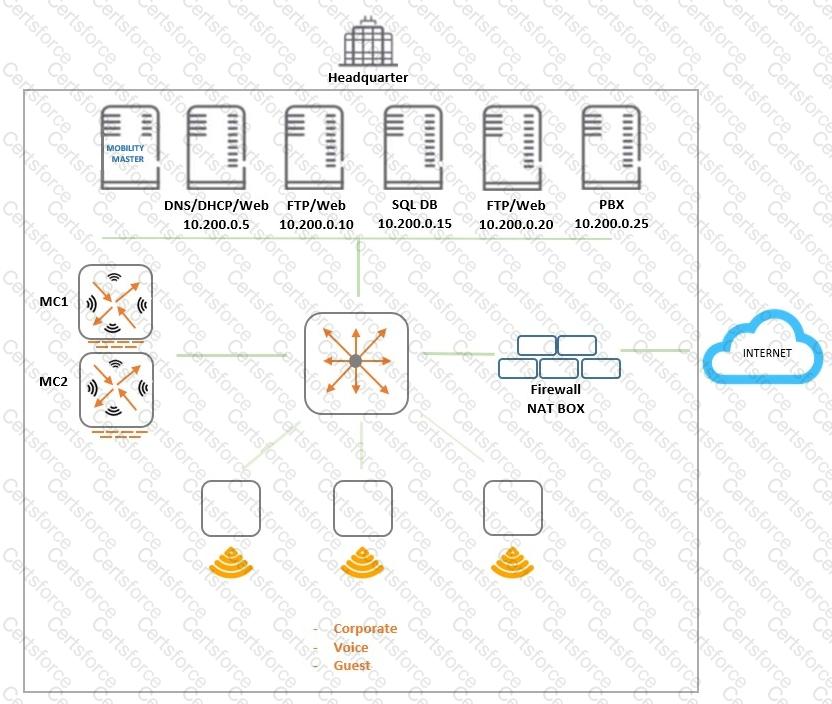
An organization provides WiFi access through a corporate SSID with an Aruba Mobility Master (MM) - Mobility Controller (MC) network that includes PEF functions. The organization wants to have a single firewall policy configured and applied to the employee role.
This policy must allow users to reach Web, FTP, and DNS services, as shown in the exhibit. Other services should be exclusive to other roles. The client NICs should receive IP settings dynamically.
Which policy design meets the organization’s requirements while minimizing the number of policy rules?
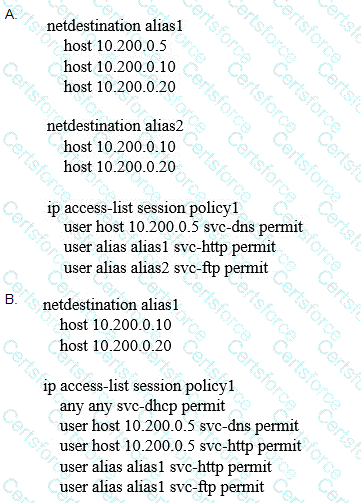
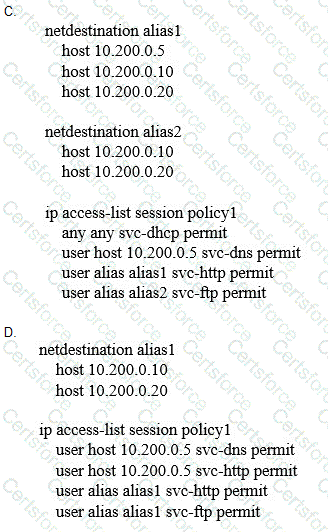
Refer to the exhibit.
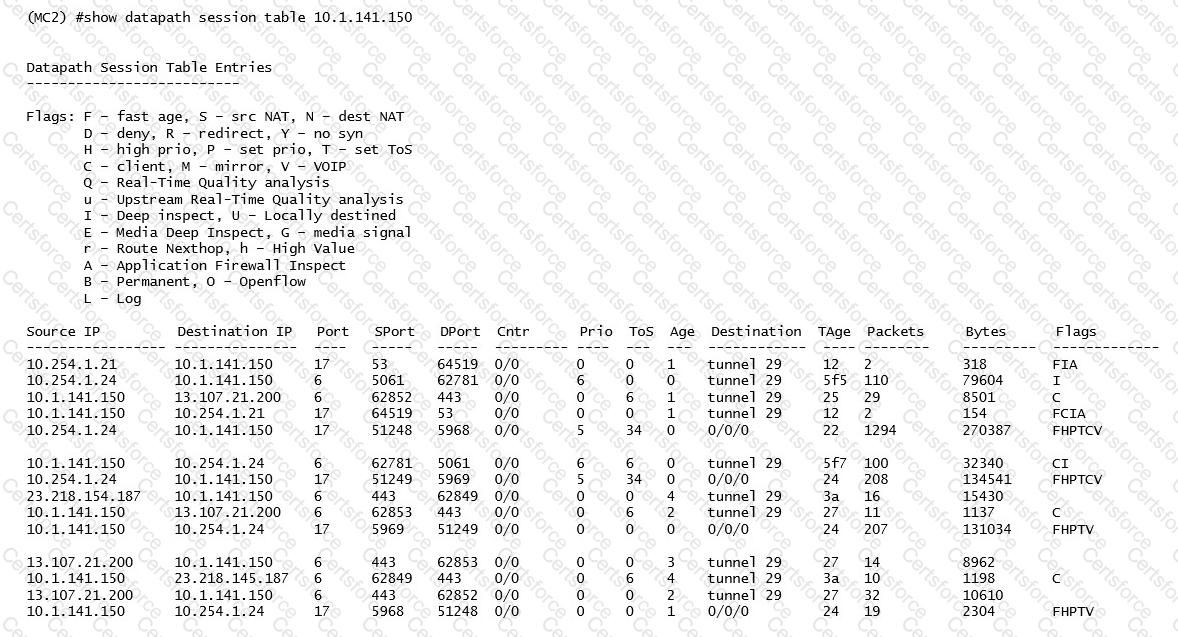
A network administrator deploys DSCP based prioritization in the entire wired network to improve voice quality for a SIP-based IP telephony system used by the company. However, users report that calls they make from WLAN have poor audio quality, while desktop phones do not experience the same problem. The network administrator makes a test call and looks in the datapath session table.
Based on the output shown in the exhibit, what is one area that the network administrator should focus on?
Refer to the exhibit.
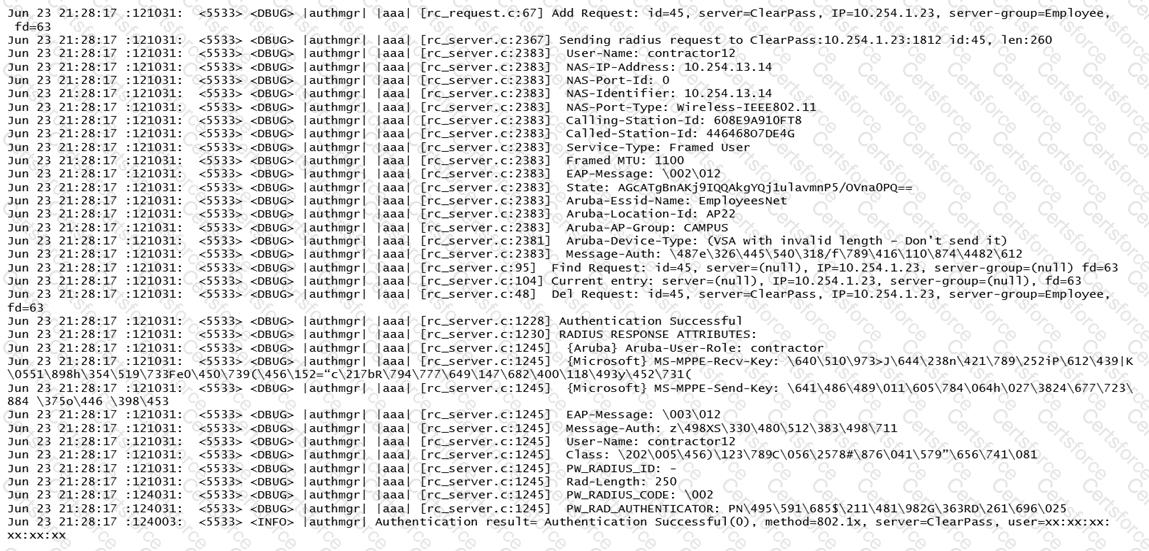
A network administrator wants to allow contractors to access the WLAN named EmployeesNet. In order to restrict network access, the network administrator wants to assign this category of users to the contractor user role. To do this, the network administrator configures ClearPass in a way that it returns the Aruba-User-Role with the contractor value.
When testing the solution, the network administrator receives the wrong role.
What should the network administrator do to assign the contractor role to contractor users without affecting any other role assignment?